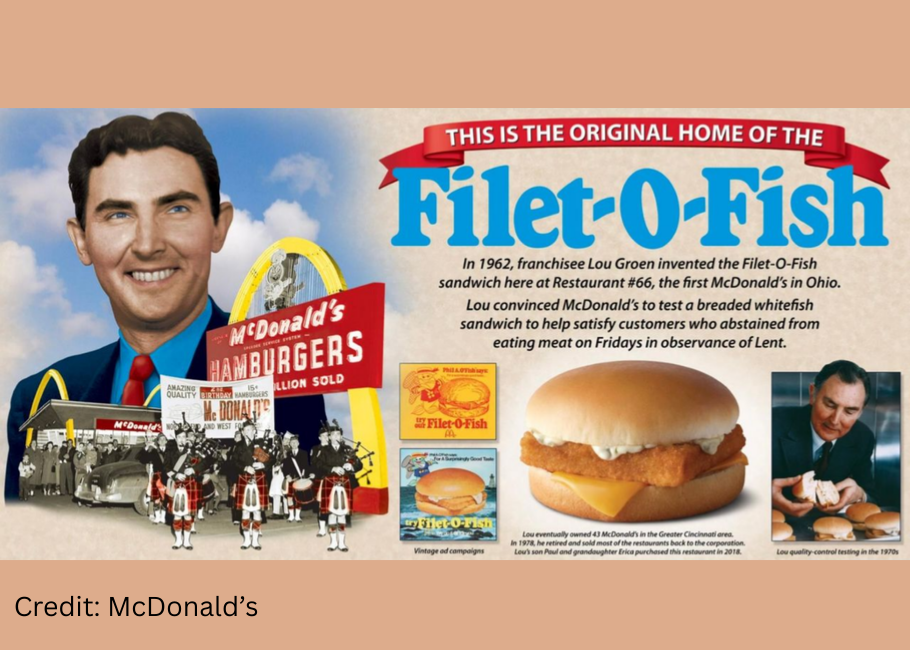How the Filet-O-Fish Saved McDonald’s on Good Friday
The surprising link between Catholic tradition and fast-food history

How the Filet-O-Fish Won Good Friday
In the early 1960s, McDonald’s franchise owner Lou Groen noticed a recurring problem in his Cincinnati restaurant: sales dropped sharply on Fridays, particularly during Lent. At the time, Catholic dietary rules required abstaining from meat on Fridays, and many customers avoided burgers.
Interested in learning more about anti-inflammatory super food: Check out: The Secret to Japanese Longevity: Protein-Packed Tofu
Groen proposed a solution: a breaded fish sandwich. Meanwhile, McDonald’s founder Ray Kroc developed his own meatless alternative, the “Hula Burger,” made with grilled pineapple and cheese. In 1962, the two sandwiches were tested on a single Friday—reportedly Good Friday, a key day of abstinence for Catholics. The Filet-O-Fish dramatically outsold the Hula Burger, securing its place on the national menu by 1965.
The sandwich became McDonald’s first non-burger menu addition. Today, it remains closely tied to Lent: 25% of annual Filet-O-Fish sales occur during the 40-day season, with some restaurants selling hundreds on Good Friday alone.
Fun Fact: The original sandwich included cheese, but it was later removed to emphasize the fish.
Meatless Fridays: A Tradition Spanning Centuries
The practice of avoiding meat on Fridays, particularly Good Friday, dates to the earliest days of Christianity.
Early roots:
- 1st century: Christians fasted or abstained from meat on Fridays to honor Jesus’ crucifixion, often eating one simple meal after sunset.
- Middle Ages: The Church formalized abstinence, classifying fish as permissible because it was not considered “flesh meat” (caro). Fish also carried biblical symbolism, linked to Jesus’ miracles and post-Resurrection meals.
Modern shifts:
- 1966: After Vatican II reforms, the Catholic Church relaxed rules, requiring abstinence only on Ash Wednesday, Good Friday, and Fridays during Lent. However, many Catholics still choose fish as a meatless option year-round.
The Filet-O-Fish’s rise coincided with these traditions, offering a convenient fast-food alternative for observant Catholics.
Why Fish? More Than Just a Loophole
Contrary to popular myths, the Church’s allowance of fish was not designed to boost the fishing industry. Theologians viewed fish as a humble food tied to scripture, such as the miracle of the loaves and fishes. Medieval classifications also separated “cold-blooded” fish from land animals, which were associated with feasting and indulgence.
The Filet-O-Fish, while a modern invention, taps into this ancient symbolism. Its success highlights how religious practices can shape—and be shaped by—cultural trends.






